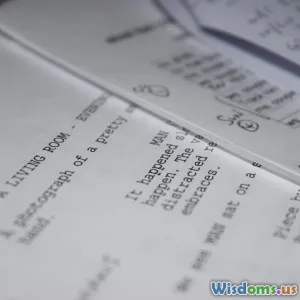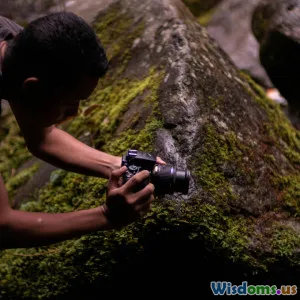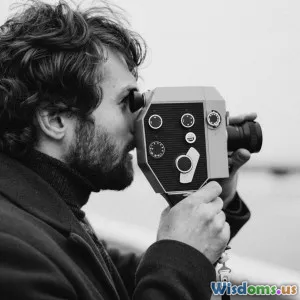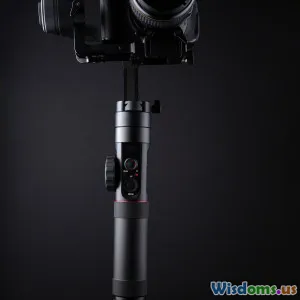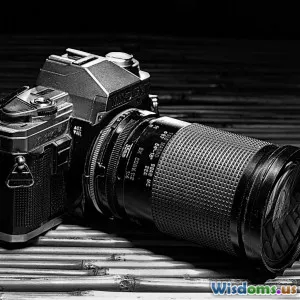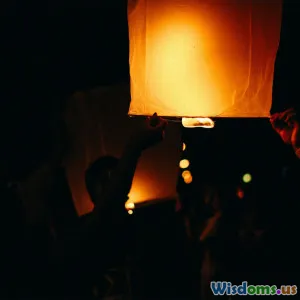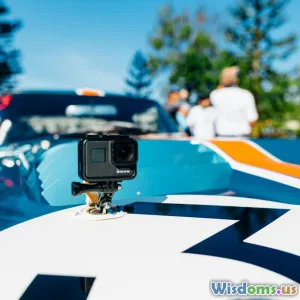
The Challenge Of Cinematography In Fast Moving Environments
9 min read Explore the art and science behind capturing stunning visuals in fast-paced environments and learn how cinematographers conquer motion challenges. (0 Reviews)
The Challenge of Cinematography in Fast Moving Environments
Cinematography — the art of telling stories through visual language — demands precision, creativity, and technical prowess. While every filmmaking environment has its unique obstacles, few match the complexity and intensity of shooting in fast moving surroundings. Whether it's a high-speed car chase, a rapid sporting event, or an aerial drone shot zipping through mountains, capturing clear, evocative images amidst frantic motion stretches both technology and artistry to their limits.
Motion is inherently unpredictable. Cameras must react and adapt, equipment must stabilize in the face of shaking, and cinematographers must anticipate fluid action that unfolds in real-time. How then have filmmakers risen to this challenge? This article dives into the multifaceted hurdles and innovative solutions that characterize cinematography in fast moving environments.
Why Fast Motion is a Cinematographer’s Toughest Test
Fast moving scenes put several critical cinematographic elements under strain:
- Focus and Sharpness: Rapid movement challenges autofocus systems and manual concentrating, risking blurred images when precision is paramount.
- Stability & Framing: Maintaining a smooth, coherent frame while both subject and camera accelerate demands sophisticated stabilization technology and skillful operator control.
- Exposure and Lighting: Frequent changes in speed and direction can disturb consistent exposure, while lighting conditions often dynamically shift.
- Compositional Consistency: Envisioning and capturing the intended composition amid chaos requires intuition and rapid decision-making.
The stakes are especially high in action genres, live sports broadcasts, and documentaries relying on real-time events.
Case Study: “Mad Max: Fury Road”
George Miller’s “Mad Max: Fury Road” (2015) is widely praised for its visceral, high-speed action visuals. Cinematographer John Seale used specially rigged rigs and harnesses on speeding vehicles, installing Red Epic cameras with custom stabilization to capture the pulse-pounding chase scenes. Their rigorous pre-planning, combining large-scale stunt coordination with innovative camera mounting, created a completely immersive, unshaky visual experience despite constant motion.
Technological Innovations Powering Fast Motion Cinematography
High Frame Rate Cameras and Shutter Speed
To freeze fast movement crisply, increasing the frame rate is essential. High-speed cameras like the Phantom Flex shoot thousands of frames per second, enabling slow-motion playback that preserves detail during rapid action.
Complementing this is the adjustment of shutter speed. Faster shutter speeds reduce motion blur dramatically, critical for fast-moving subjects. However, increasing shutter speeds reduces light intake, which entails compensating via aperture, ISO, or lighting.
Advanced Stabilization Systems
Modern cinematography relies heavily on stabilization: handheld gimbals, Steadicams, and mechanical rigs absorb vibrations and rapid jolts.
The DJI Ronin series revolutionized handheld gimbals, allowing single operators to smoothly capture running or moving vehicles’ scenes. Additionally, technologies like the MoVI Pro gimbal enable complex shots with drone-like agility but from the ground.
Moreover, camera cars equipped with gyro-stabilized mounts on off-road rigs maintain compositional integrity on rough terrains.
Drones and Aerial Cinematography
The advent of drones gave filmmakers unprecedented freedom to capture fast-moving aerial footage. Lightweight, agile quadcopters can track vehicles or athletes through landscapes at high velocity.
Drones also integrate advanced GPS and motion sensors to maintain smooth flight paths despite environmental factors like wind. Operators combine manual control with preprogrammed routes to choreograph dynamic shots.
Autofocus and AI-Assisted Tracking
Traditional focus pulling becomes daunting with rapid object movement, especially in unpredictable scenes. Industry advancements now leverage AI-driven autofocus systems, capable of detecting and locking onto fast-moving faces or objects.
Systems like Canon’s Dual Pixel CMOS and Sony’s Real-time Tracking enable continuous focus adjustments that react faster than human operators can, greatly improving image clarity.
Real-Time Data and Remote Monitoring
To nail fast-moving shots, crews rely on remote monitoring stations showing real-time data, shot composition, focus info, and exposure. These allow directors and cinematographers to adjust camera settings instantly, reducing costly retakes.
In high-stakes environments, integration of telemetry with onboard cameras informs operators of speed, angle, and positioning to keep shots precisely in frame.
Artistic and Logistical Challenges
Predicting and Choreographing Motion
Despite technology, anticipating the subject’s path and timing is vital. Stunt coordinators, athletes, and performers rehearse meticulously, allowing cinematographers to pre-plan shots that will catch peak moments of action.
For example, in sports documentaries, coordinating with coaches and players to predict pivotal plays lets camera operators position themselves with precision.
Balancing Risk and Creativity
Shooting fast-moving scenes often places crew and equipment in harm’s way. Whether mounting cameras on speeding motorcycles or flying drones close to cliffs, safety measures must coexist with creative ambitions.
Many productions employ remote-controlled cameras or protective rigging to minimize on-set risks without sacrificing daring visuals.
Post-Production Corrections
Color grading and stabilization software add another layer of polish, smoothing residual shakiness or exposure inconsistencies difficult to control on set.
Tools like Adobe After Effects and DaVinci Resolve’s stabilization algorithms, combined with manual frame-by-frame corrections, rescue shots that might otherwise be unusable.
Nonetheless, the goal remains to capture the best possible footage live.
Examples of Fast-Motion Cinematography Mastery
“The Revenant” (2015)
Emmanuel Lubezki utilized ultra-wide lenses and natural light, often shooting long continuous takes. Tracking rugged wilderness chases and intense movement required both handheld gimbals and RoV vehicles, achieving an immersive, rough-hewn aesthetic without compromising clarity.
Sports Broadcasts
Live sports broadcasts exemplify fast-moving cinematography. Multiple camera units equipped with remote pan-tilt-zoom (PTZ) systems automatically track athletes at high speed, ensuring viewers enjoy uninterrupted perspectives of plays.
For instance, Cricket’s Hawkeye technology not only tracks ball trajectory for audiences but informs camera operators where to focus in real-time.
Action Video Games and Virtual Cinematography
Inside virtual environments, fast moving scenes are recreated using “virtual cameras” controlled similarly to real ones. This crossover underscores the skill of real-world cinematographers, who inspire digital filmmakers replicating kinetic energy.
Conclusion: The Future Is Fast and Fluid
Cinematography in fast moving environments stands at the intersection of art, technology, and human skill. The relentless innovation of camera bodies, stabilizers, aerial drones, and AI-assisted focus continues to expand the visual possibilities.
Yet, technology alone cannot solve all challenges. Astute anticipation of motion, rigorous rehearsals, and creative collaboration remain essential.
For viewers, the seamless visuals belie immense complexity behind the scenes. For emerging filmmakers, mastering these challenges offers a gateway to crafting unforgettable stories charged with kinetic energy.
As the pace of visual storytelling quickens and new technologies emerge, those who embrace the turbulence of fast motion will unlock ever more breathtaking cinematic experiences.
References & Further Reading:
- John Seale interview on "Mad Max: Fury Road" Cinematography. (American Cinematographer Magazine, 2015)
- DJI Official Documentation on Ronin Stabilizers
- Phantom High-Speed Cameras: Technical Specs
- Canon Dual Pixel Autofocus Whitepapers
- Lubezki’s "The Revenant" Cinematography breakdown
- SportsBroadcastTech Journal, issue on PTZ systems
"The essence of cinematography is not to freeze a moment, but to translate motion into storytelling." – Anonymous Cinematographer
Rate the Post
User Reviews
Popular Posts










